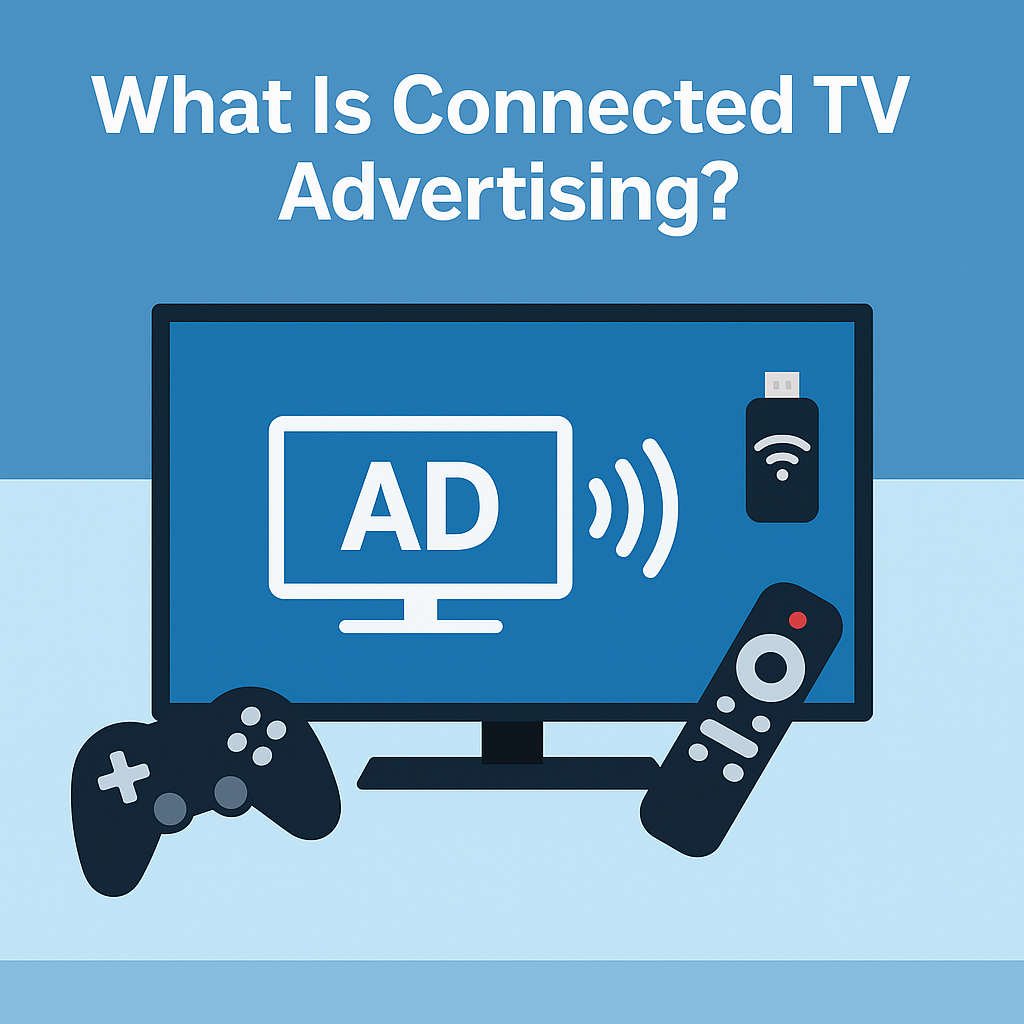

In today’s media landscape, television is no longer just a box in your living room. It’s a dynamic, data-driven channel for reaching highly engaged audiences—and Connected TV (CTV) advertising is at the center of this transformation.
Whether you're a brand marketer, media buyer, or agency strategist, understanding how CTV works (and why it matters) is critical in 2025.
Connected TV (CTV) refers to any television that can stream content via the internet, rather than through traditional cable or satellite. This includes:
These platforms allow viewers to watch content from ad-supported services such as YouTube TV, Freevee, Pluto TV, Tubi, and Peacock, among others.
Connected TV advertising is the delivery of video ads through these internet-connected streaming platforms. These ads appear before, during, or after content on ad-supported streaming services (AVOD) or live-streaming channels and are shown on the largest screen in the household.
Unlike traditional TV ads, CTV advertising uses digital ad technology to offer:
It combines the impact of traditional TV with the precision of digital advertising.
FeatureTraditional TVConnected TVDeliveryCable or satellite broadcastInternet streamingTargetingDemographic & location-basedBehavioral, household, interest-basedMeasurementRatings estimates (Nielsen)Real-time impressions & conversionsFlexibilityFixed buys & long lead timesDynamic, programmatic activation
CTV offers more control, transparency, and performance insights—which is why ad dollars are rapidly shifting from linear to digital video environments.
CTV ads can appear on platforms like:
These environments offer premium content, brand safety, and engaged viewership—making them ideal for performance- and brand-driven campaigns.
To get started with CTV advertising, you'll need:
Many agencies and advertisers partner with CTV-specialized platforms to access negotiated deals, curated supply, and attribution tools.
CTV is no longer just a trend—it’s the new standard.
As more viewers migrate to streaming and more platforms launch ad-supported tiers, CTV will continue to attract brand dollars previously reserved for linear TV.
What sets CTV apart is its ability to reach, resonate, and measure—all in one channel.
Whether you’re a local business or a global brand, CTV gives you the scale of television and the control of digital.
Connected TV advertising is where performance meets storytelling—on the biggest screen in the house.
If you’re still relying solely on social, search, or display, now is the time to test CTV. It’s no longer just a top-of-funnel play—it’s a full-funnel force.
👉 Ready to see how Amazon DSP can transform your media plan?
Book Your Free Media Plan Audit Today
Comments